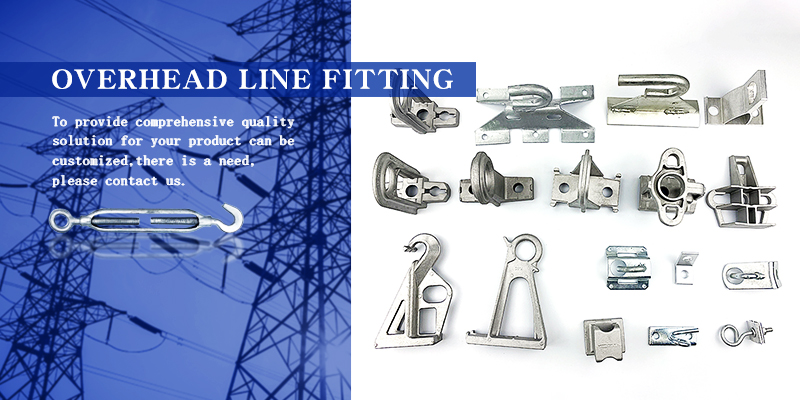General requirements for overhead lines:
Overhead lines should widely use steel-cored aluminum stranded wire or aluminum stranded wire. The cross-section of the aluminumstranded wire of the high-voltage overhead line shall not be less than 50 square millimeters, the cross-section of the core aluminum stranded wire shall not be less than 35 square millimeters; the cross-section of the empty wire shall not be less than 16 square millimeters.
The wire cross section should meet the needs of the maximum load.
The selection of the cross section should also meet the voltage loss of not more than 5% of the rated voltage (high-voltage overhead lines), or 2% to 3 (lighting lines with high visual requirements). And should meet a certain mechanical strength.
Construction of overhead lines
The construction specification method and steps of overhead line are as follows:
Line measurement: survey the terrain and features according to the design drawing, determine the line starting point, corner point and the pole position of the terminal store, finally determine the position of the middle pole and the reinforcement pole and insert the stake.
Backfilling of foundation pit excavator: When excavating the foundation pit, attention should be paid to the soil quality and surrounding environment. The size of the pit opening is generally 0.8 meters wide and 0.3 meters long. The size of the wire pit is generally 0.6 meters wide and 1.3 meters long. The reference value of the buried depth of the pole is as follows:
Cement pole length (m) 7 8 9 10 11 12 15
Buried depth (m) 1.1 1.6 1.7 1.8 1.9 2.0 2.5
When backfilling the tower foundation and the cable foundation, it is not allowed to backfill tree roots, weeds, etc. The soil should be compacted more than twice, and the backfill should be 30-50 cm above the ground.
Pole: Electric poles are used to support wires in overhead lines. There are many types of electric poles, and the common ones are linear poles, corner poles, terminal poles, etc. according to their functions. Commonly used pole methods are: crane poles, tripod poles, upside-down poles and stand poles.
The tripod pole is a relatively simple way of erecting the pole. It mainly relies on the small winch on the tripod to hoist the pole. When the pole is erected, first move the pole to the edge of the pit, set up the tripod, and place the pole on the pole. Three pull ropes are tied at the tip to control the pole body, then the pole is erected and dropped in the pole pit, and finally the pole body is adjusted and the soil is compacted.
Cross arm assembly: Cross arm is a bracket for installing insulators, switchgear, arresters, etc. According to the material, there are wooden cross-arms, iron cross-arms and ceramic cross-arms. The linear rod cross arm should be installed on the load side, and the non-linear rod should be installed on the opposite side of the tension.
Insulators: Insulators are used to hold wires in place. So it should have sufficient electrical insulation properties and mechanical strength. Commonly used insulators for overhead lines include pin insulators, suspension insulators, butterfly insulators, etc. The rated voltage of low-voltage insulators is 1kV, and the high-voltage insulators are used for 3kV, 6kV, and 10kV lines.
Wire-pull construction: The wire-pull in the overhead line plays the role of supporting the pole. Generally, the corner rod, terminal rod, tension rod, etc. must have a wire-pull to support the pole, so as not to be skewed by the tension of the wire. Generally, the angle between the cable and the ground is between 30° and 60°, and the cable handle, the middle cable handle, and the lower cable handle are prepared respectively.
Wire erection method: erecting wires includes laying out, connecting wires, hanging wires and tightening wires, etc. Pay-off is to release the wire from the spool and set it up on the pole cross-arm. There are two types of line layout: drag and drop method and spread method. Overhead wire conductors are commonly connected by splicing, binding, and crimping. Hanging the wire is to pull the wire on the pole with a small rope and put it on the cross arm. Tightening the wire is to firmly bind the wire to the insulator at one end of the tension resistance, and tighten it with a tight wire at the other end. Sag is the natural sag formed by the sag of the wire within a span.
The phase sequence of the three-phase arrangement of the overhead line shall meet the following requirements: from the left side facing the load, the phase sequence of the conductor arrangement is L1, N, L2, L3, and the neutral line is generally on the road side of the pole. Electric poles are generally erected on the north and east sides of the road.
Post time: May-24-2022

